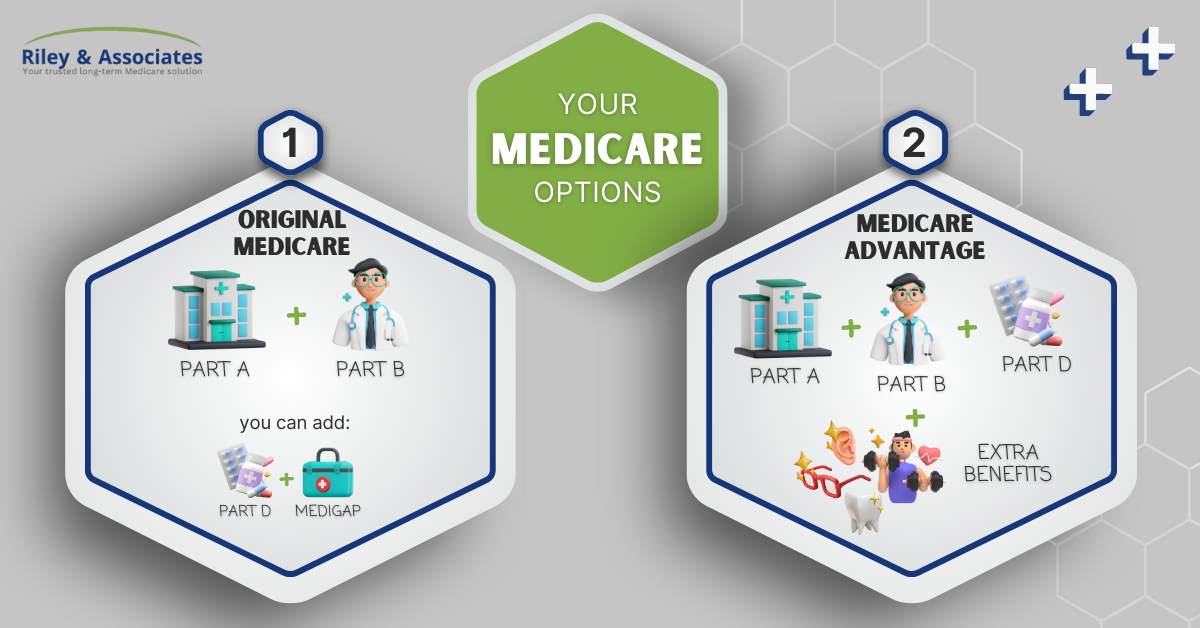Understanding Your Health Coverage Options
As you approach the age of 65 or if you have a qualifying disability, navigating the world of Medicare can seem daunting. However, understanding the basics of this federal health insurance program is crucial to ensuring you have the coverage you need for your healthcare needs. Here’s a breakdown of the essential aspects of Medicare.
What is Medicare?
Medicare is a national health insurance program administered by the federal government. It primarily covers individuals aged 65 and older, as well as those with certain disabilities or End-Stage Renal Disease (E.S.R.D.). The program is divided into four main parts:
- Part A (Hospital Insurance): Covers inpatient hospital stays, skilled nursing facility care, hospice care, and some home health care services.
- Part B (Medical Insurance): Covers doctor visits, outpatient care, preventive services, and durable medical equipment.
- Part C (Medicare Advantage Plans): Private health plans that combine Parts A, B, and often Part D (prescription drug coverage) into one plan.
- Part D (Prescription Drug Coverage): Helps cover the cost of prescription medications.
Eligibility and Enrollment
Most people become eligible for Medicare when they turn 65. However, you may also qualify if you’re under 65 and have a disability or ESRD. The Initial Enrollment Period for Medicare starts three months before your 65th birthday month and lasts for seven months.
If you’re already receiving Social Security benefits, you’ll be automatically enrolled in Parts A and B. Otherwise, you’ll need to actively enroll during your Initial Enrollment Period. Missing this window could result in late enrollment penalties.
Medicare Costs
While Medicare provides valuable coverage, it’s not entirely free. Here’s a breakdown of some of the costs you may encounter:
- Part A: Most people don’t pay a premium for Part A if they or their spouse paid Medicare taxes while working.
- Part B: You’ll pay a monthly premium for Part B, which is based on your income.
- Part D: If you choose to enroll in a Part D plan, you’ll pay a monthly premium, deductible, and co-pays for prescriptions.
- Medicare Advantage Plans: These plans have their own premiums, deductibles, and co-pays, which can vary depending on the plan you choose.
Supplementing Original Medicare
While Medicare covers a significant portion of your healthcare costs, it doesn’t cover everything. That’s where supplemental insurance plans come into play. These plans can help fill in the gaps and cover some of the out-of-pocket expenses that Medicare doesn’t cover, such as deductibles, copays, and coinsurance.
Some common supplemental plans include:
Medigap (Medicare Supplement Insurance): These private insurance plans help cover some of the costs not covered by Original Medicare (Parts A and B).
Employer-Sponsored Retiree Plans: If your former employer offers a retiree health plan, it may work alongside your Medicare coverage.
Medicaid: For those with limited income and resources, Medicaid can help cover Medicare premiums, deductibles, and co-pays.
Making the Right Choice
Navigating Medicare can be complex, and the choices you make can significantly impact your healthcare coverage and costs. It’s essential to research your options carefully and seek guidance from trusted sources, such as the Medicare website (www.medicare.gov), or have a trusted licensed insurance agent.
By understanding the basics of Medicare, you’ll be better equipped to make informed decisions about your healthcare coverage and ensure you have the protection you need for a comfortable retirement.



